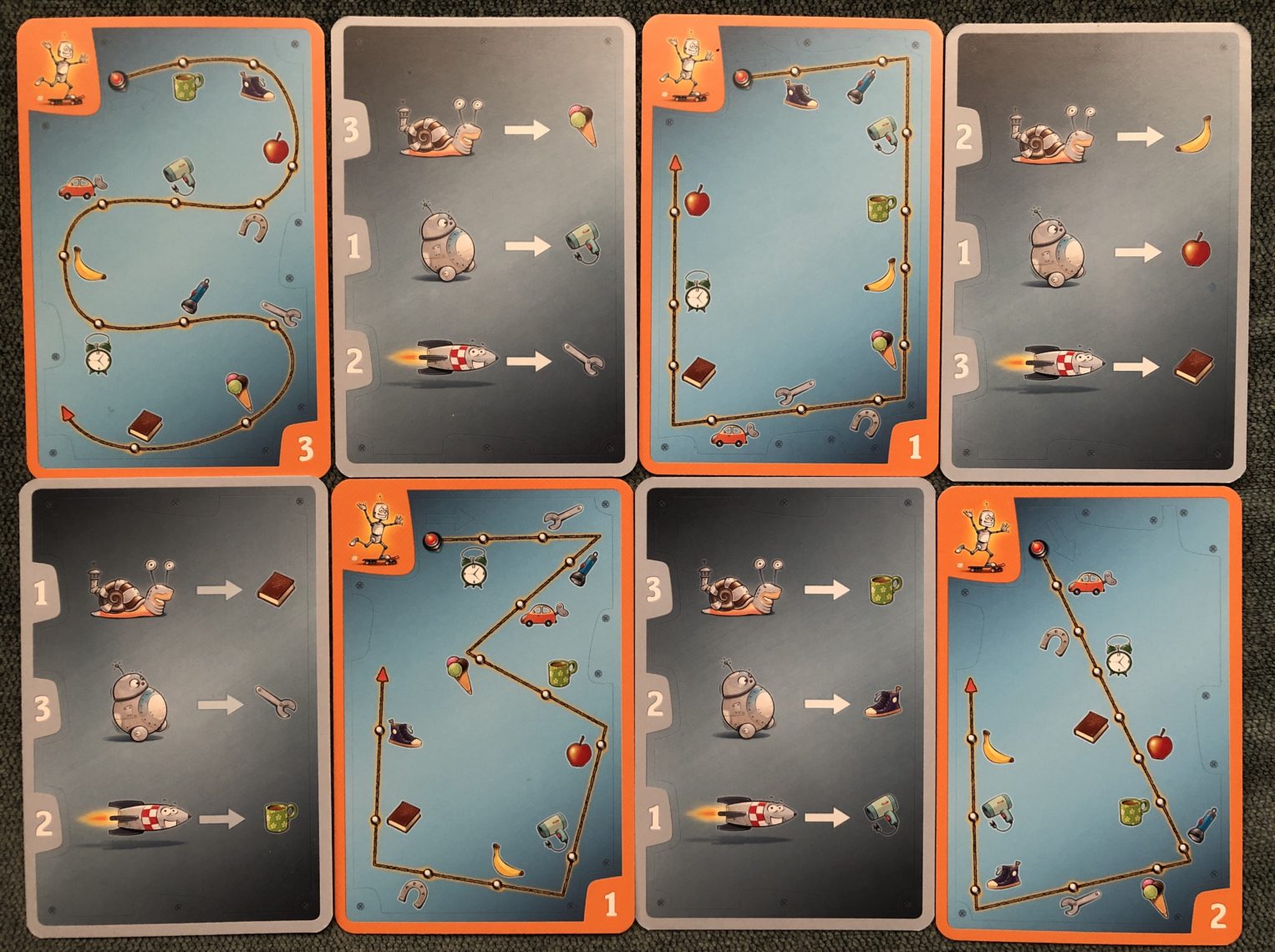Pandasaurus Games is on a roll. Not literally–that would make a hella sandwich, rimshot–but in the sense of becoming a go-to publisher for quality games. They’re in the niche that used to be dominated by Rio Grande, Amigo, Mayfair, or Z-Man. This year alone we’ve enjoyed (and reviewed) Silver & Gold, Sonora, and CTRL–each very different games but all sharing the Pandasaurus qualities of family-friendliness, accessibility, and strong visual appeal. While they do offer some games on the medium part of the spectrum (Yedo is pretty well the heaviest game they’ve published), they’re quite happy to leave the heavy lifting to others.
As we head into the fall, I thought I’d look at three current and upcoming Pandasaurus card games that might tickle your fancy and serve as excellent fillers and–yes–stocking stuffers or holiday gifts. Or treats for yourself for being good.

Robots was designed by Reinhard Staupe, who’s been around since 1995. I know him as the designer of classic trading game Basari and the intriguing Euro Havana. Turns out he’s designed dozens of kids games over the years as well as some variants of Wolfgang Warsch’s The Mind. So it’s not much of a stretch to see him turn his mind to a more kid-friendly version of The Mind that uses the same no-talking getting-into-sync idea.
The game for 2 – 6 players takes 11 rounds with players taking turns being a robot whose job it is to meander along a track. The robot beeps at the beginning of their journey and then again when they stop (mentally) at one of the objects along the track–but only the robot knows which one and how fast they’re moving to get there. The other players have to guess, based on the length of the silence between beeps, which object the robot stopped at. The better the guess, the more chips the players win. The object is to win as many chips as possible.
The hard part about Robots is that every player will have their own internal clock, so the team has to recalibrate constantly; the rules do allow for letting one player be the robot for the whole game if you want to make things easier, but that kind of takes the fun out sharing the robot role. There’s also a competitive version where everyone guesses individually for points–for those who just can’t co-operate.

The Game: Quick & Easy is the first of two by Steffen Benndorf, who first came to prominence with 2012’s roll’n’write Qwixx and then broke out with 2015’s co-operative card game The Game. This version might be quick but I dispute whether it’s much easier (harumph).
Once again 2 – 5 players are faced with playing all the numbered cards in the 50-card deck into two piles, one going up and one going down. The (supposedly easier) twist is that instead of 1-100, the cards only go from 1-10 but are now in five suits, and you’re allowed to play any card on a card of the same colour. So there are a lot more ways to reverse entropy–but unless you splay the cards in the piles it’s still a challenge because it helps to remember what’s been played. I could definitely see using this in the classroom and letting kids both splay the piles and play with open hands so they can discuss strategies.
In any event, if you and your group found The Game too hard you will definitely find Quick & Easy more forgiving but still a satisfying challenge. My one critique is the skully theme for the graphic design, which could be off-putting for kids.

Ohanami is the other Benndorf game and it is a very different animal (err, plant) entirely. It’s a three-round pass-drafting game for 2 – 4 players from a deck numbered from 1 to 120 in four landscape design-themed suits (17 grey; 34 blue; 34 pink; 35 green), with the cards in each suit sprinkled non-sequentially throughout the deck.
At the beginning of each round players are dealt 10 cards, which will be chosen, passed around, and played simultaneously 7 Wonders-style. Over the course of the game players will plant up to three “gardens” consisting of cards in numerical order, the restrictions being that once cards are played they cannot be moved, and that new cards can only be added only to the top and bottom of a column.
Blue cards score in all three rounds, green ones only in the second and third, and grey and pink only at the end of the game, with pink’s rewards growing triangularly (only 1 point for 1 pink, then 3 for 2 pink, 6 for 3 pink, 10 for 4 pink and so on). So there’s this constant tension between wanting blue and green cards that score less but more often, but also grey and pink cards that only score once but more handsomely.
It’s simple, elegant, perhaps the most distilled and focused drafting game I’ve even played, and a great introduction to the genre. Kudos to Benndorf.
In a month or so I’ll bring you news of Pandasaurus’ bigger-box releases, but meanwhile I hope you seek out these games. It’s been a while since a publisher has impressed me with the consistent quality of their releases, and I sincerely recommend each of them depending on the type of experience you’re looking for.
Thanks to Pandasaurus Games for providing review copies of the games mentioned in this article.
Comments
No comments yet! Be the first!